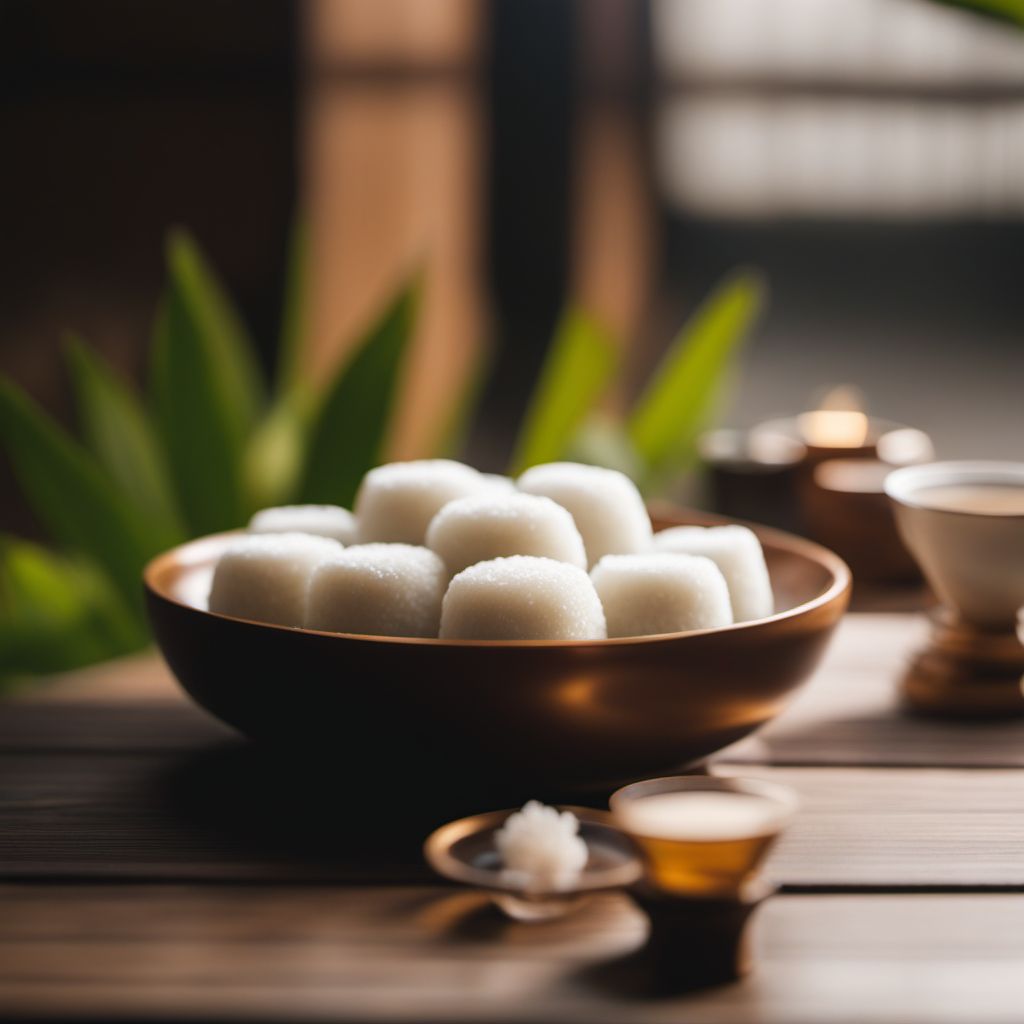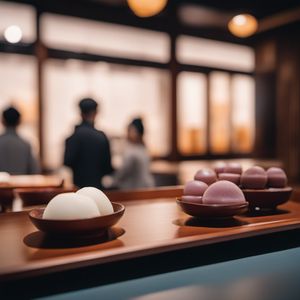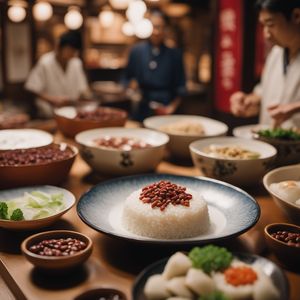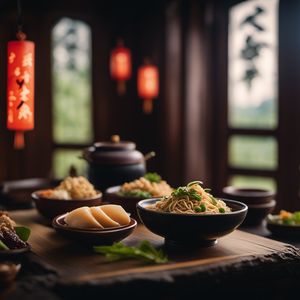
Dish
Habutae mochi
Habutae mochi is made by mixing glutinous rice flour with sugar and water to form a dough. The dough is then steamed and pounded until it becomes soft and chewy. The mochi is then shaped into small balls and dusted with cornstarch to prevent sticking. Habutae mochi is often filled with sweet red bean paste or other sweet fillings. It is a popular dessert in Japan and is often served during special occasions such as weddings and festivals.
Origins and history
Habutae mochi originated in Japan and has been a popular dessert for centuries. It is often associated with special occasions and is considered a symbol of good luck and prosperity.
Dietary considerations
Habutae mochi is gluten-free and vegan. It is high in carbohydrates and calories, so it should be consumed in moderation. It is suitable for people with gluten intolerance and vegan diets. It may contain allergens such as soy and nuts depending on the filling used.
Variations
There are many variations of habutae mochi, including those filled with matcha, chocolate, and fruit. Some variations are also coated in sesame seeds or other toppings. The fillings can vary depending on the region and the occasion.
Presentation and garnishing
Habutae mochi is often presented in a simple and elegant manner, with the mochi balls arranged on a plate or in a small bowl. It is often garnished with fresh fruit or edible flowers. To prevent the mochi from sticking to your hands, dust your hands with cornstarch before handling the dough.
Tips & Tricks
Habutae mochi is best consumed fresh. If storing, wrap it in plastic wrap and keep it in the refrigerator. To reheat, wrap it in a damp paper towel and microwave for a few seconds. Be careful not to overheat as it can become hard and chewy.
Side-dishes
Habutae mochi is often served with green tea or other Japanese teas. It can also be served with fruit or ice cream. Some people also enjoy it with savory dishes such as miso soup or grilled fish.
Drink pairings
Habutae mochi is often served with tea, especially green tea. It can also be paired with sweet wines or sake. The drink pairing depends on the filling and the occasion.
Delicious Habutae mochi recipes
More dishes from this category... Browse all »

Aamras
Indian cuisine

Aasmi
Indian cuisine

Agra petha
Indian cuisine

Aiyùbīng
Taiwanese cuisine

Ajdnek
Slovenian cuisine

Akafuku
Japanese cuisine

Akanés
Greek cuisine

Akumaki
Japanese cuisine




